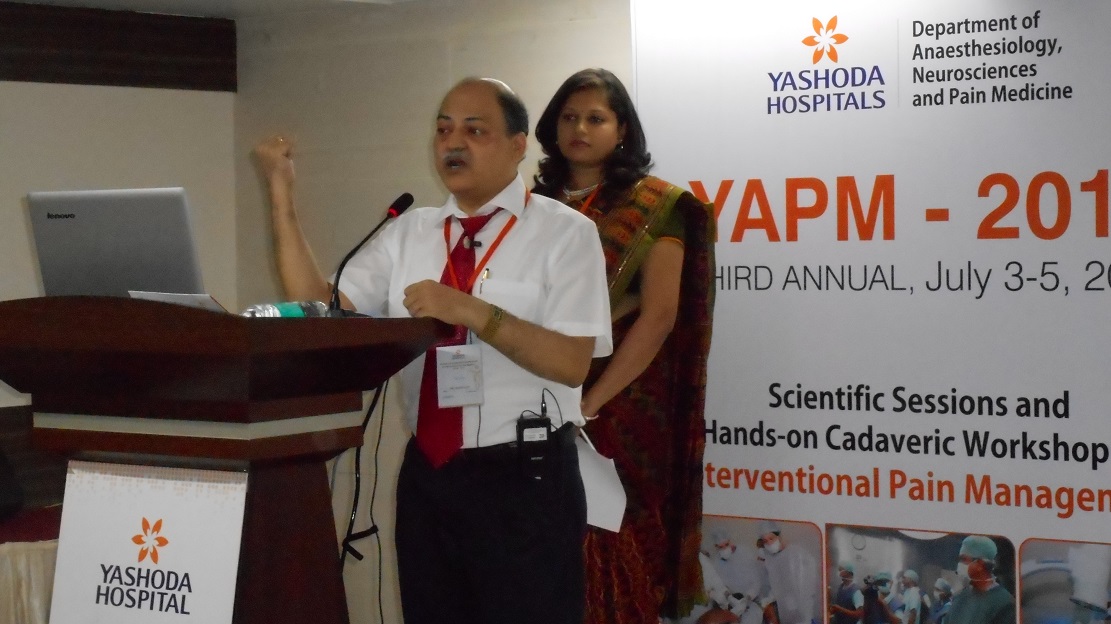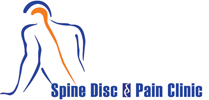Headache

Dr. Neeraj Jain
MBBS, MD, FIMSA, FIPP(USA)
For all these and many like them Dr. Neeraj Jain’s massage is “pain is real and treatable- there is no merit in suffering”. You must see a pain specialist if you still suffer from pain after a month of conservative treatment. Sooner y our pain is managed better are the overall results. Including various kinds of pain like Back pain, headache and Cancer Pain.
Experience:
Sr. Consultant Spine & Pain Specialist
Max Hospital, Pitampura, New Delhi
January 2014 – Present (2 years)
Sr. Consultant Spine & Pain Specialist
Sri Balaji Action Medical Institute
March 2007 – Present (8 years 10 months)
Sr. Consultant Spine & Pain Specialist
Spine Disc & Pain Clinics
January 2002 – Present (14 years)
Clinic Name SPINE DISC & PAIN CLINIC RU-23 Pitampura
New Delhi, Delhi 110088
India
Address SPINE DISC & PAIN CLINIC LD-122 Pitampura
New Delhi, Delhi 110088
India
Days Available: Monday-Saturday & Monday-Sunday (except Wed & Sat)
Timings 7-9 PM & 10-12 Noon
Sr. Consultant Spine & Pain Specialist
Sant Parmanand Hospital
2008 – 2014 (6 years)New Delhi Area, India
Headache
Headache
Headaches are common, and many people treat themselves with simple painkillers, drinking extra water, having a rest, or simply by waiting for the headache to go away.
Even so, headaches can be distressing and disabling, and sometimes people worry that they may have a serious underlying cause. In fact most headaches are unpleasant but cause no lasting harm.
What are the different types of headache?
Headaches can be primary, or they can be secondary which means they are a side-effect of a separate illness or injury.
Your doctor can generally tell the cause of your headache from talking to you and examining you. Once he or she has discovered the cause then you will be able to decide how to reduce or stop the headaches. This may involve taking medication only when you get the headaches, taking daily medication to prevent them or, sometimes, stopping medication you are already taking.
Primary headaches
The most common types of headache are tension headaches and migraines.
Tension Headache
Tension headaches are usually felt as a band or across the forehead. They can last for several days. They can be uncomfortable and tiring, but they do not usually disturb sleep. Most people can carry on working with a tension headache. They are not usually made worse by physical activity, although it’s not unusual to be a bit sensitive to bright light or noise.
Tension headaches tend to get worse as the day goes on and are often least in the morning. (An exception to this would be a headache caused by sleeping in an awkward position causing a sore neck.) Tension headaches are usually felt on both sides of the head (known as symmetrical) – most often the front. They are often called pressure headaches. They can interrupt work and concentration but usually not enough to send you to bed.
Tension headaches are caused by tightness in the muscles at the back of the neck and over the scalp. Tiredness, stress and an awkward sleeping position can make them worse. Some people get tension headaches if they drink too much caffeine or alcohol, if they don’t drink enough water or if they go for a long time between meals and become tired and hungry.
Tension headaches usually respond to simple painkillers. Changes in lifestyle can help – such as having less caffeine and more water, and a sensible diet. Changing pillows can sometimes help, as can getting adequate sleep and avoiding excessive noise. Occasionally tension headaches can be caused by poor vision, particularly if reading in low light for long periods
Migraines
Migraines are also very common. A typical migraine is one-sided and throbbing. Indeed, headaches that are one-sided, headaches that throb and headaches that make you feel sick are more likely to be migraines than anything else. Migraines are often severe enough to be disabling. Some patients need to go to bed to sleep off their headache.
Migraines can last anything from four hours to three days. They are often made worse by movement or sound. Patients often feel sick (nausea) or are sick (vomit), even if the pain is not severe. Often patients find bright light and even TV make the headache worse. Most people with migraines have 1-2 attacks a month.
About a third of people have migraine with ‘aura’, or ‘classical migraine’. In this condition warning symptoms (the aura) occur before the migraine. These most commonly consist of flashing lights, often in the shape of zigzags. They are sometimes described as being like firework displays. They tend to occur on one side of the vision only (although affecting both eyes at the same time). Some people actually lose half of their vision completely. Others experience tingling or weakness on one side of the body, or slurring of speech. These warning symptoms can last for up to an hour, and are generally followed by a headache. Typically the headache is on the opposite side to the visual symptoms.
What is the treatment for migraines?
Migraines can improve with rest, sleep, darkness and quiet. Drinking water can help if you don’t feel sick, and simple painkillers such as paracetamol and ibuprofen can be effective. Many people find that they are not, and have special migraine medication prescribed by their doctor. These medications can consist of tablets which you take when you have a headache. However, some people take a daily tablet to act as a migraine preventer, and this can be a good solution for those who have frequent migraines.
Migraines can be triggered by stress, certain foods such as chocolate and red wine, tiredness, and lack of body fluid (dehydration).







